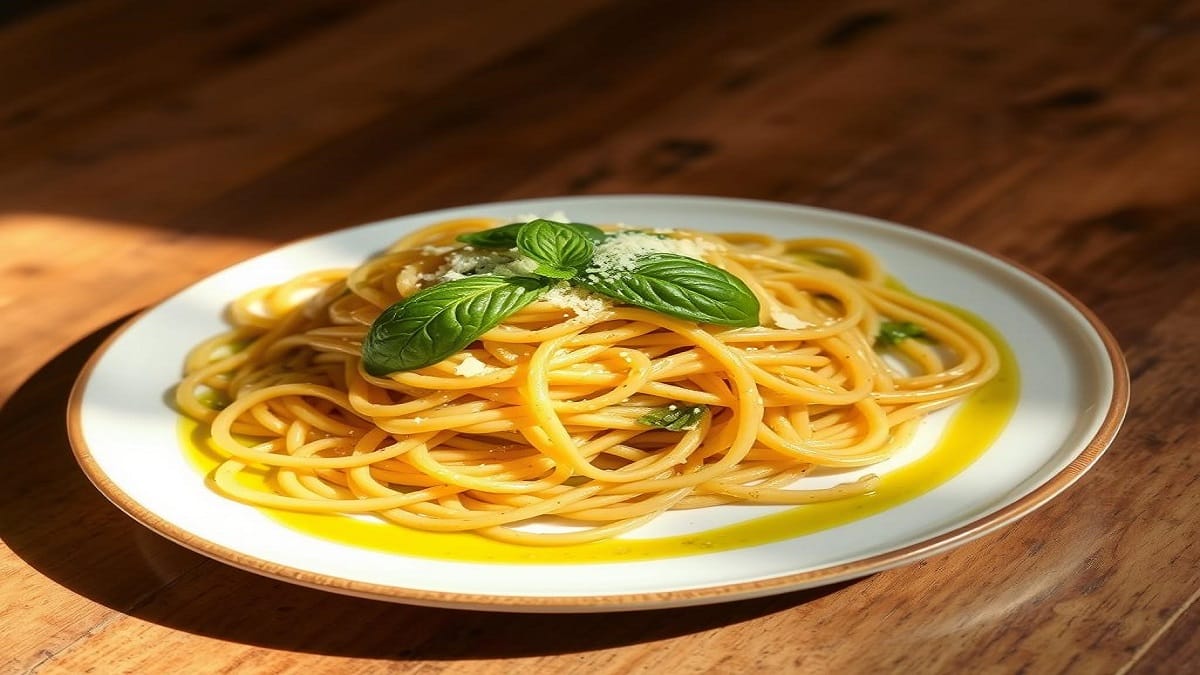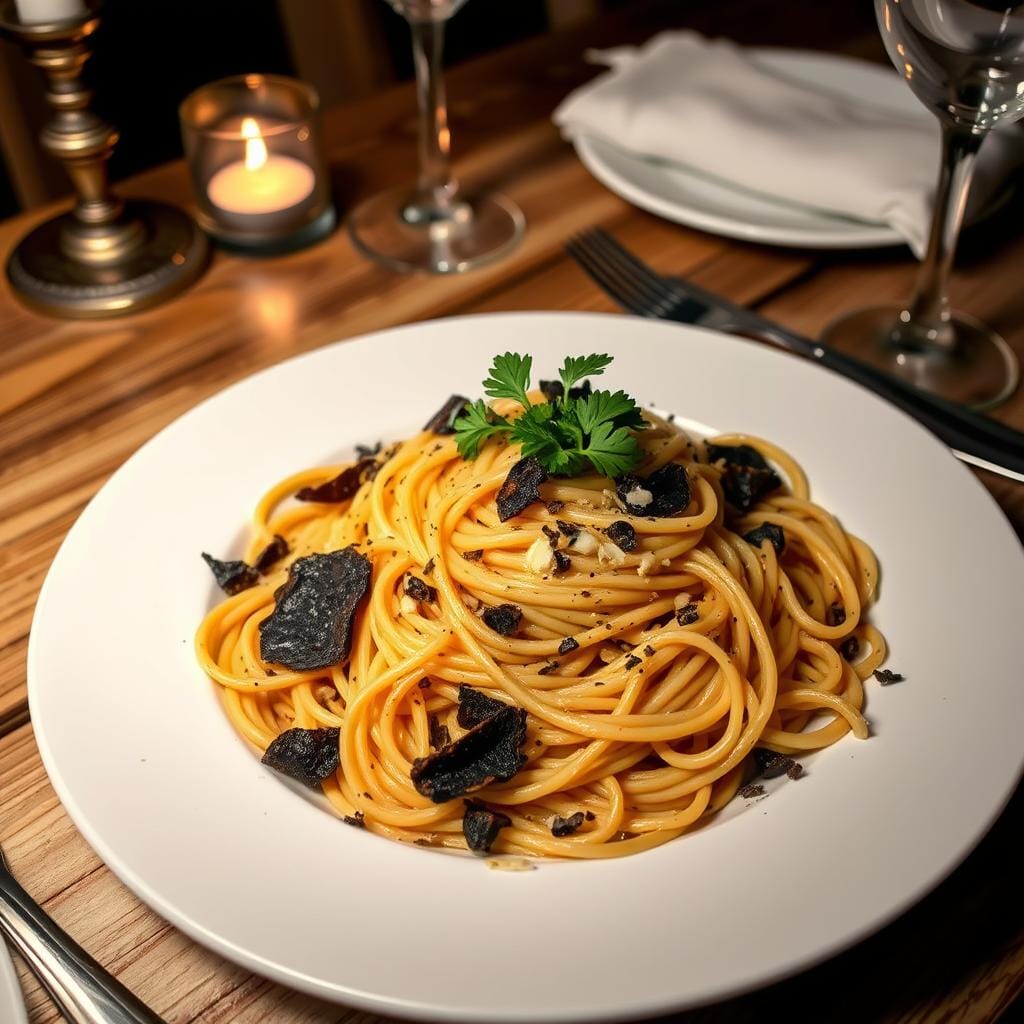Tagliolini – say it out loud. Doesn’t it just sound like something you’d want to twirl around your fork on a Sunday afternoon? Honestly, I’ve always thought of tagliolini as one of those dishes that feels fancy, but once you get the hang of it, you’ll be whipping up fresh pasta like a pro. You know, it’s not that difficult to make, especially when you’ve got the right ingredients and a little bit of time on your hands.
If you’ve ever had tagliolini at an authentic Italian restaurant, you already know how incredible this pasta can be. The thin, delicate strands are perfect for pairing with so many different sauces. Whether you’re thinking about a rich, creamy truffle sauce, a fresh pesto, or a simple garlic and olive oil combo, tagliolini will make everything taste a little bit better.
In this guide, I’m going to walk you through what tagliolini is, how to make it at home, and the best ways to serve it up for that restaurant-quality meal. Plus, I’ll throw in some tips, tricks, and anecdotes to make your tagliolini journey even more fun. Trust me, by the end of this post, you’ll be dreaming of tagliolini all week.
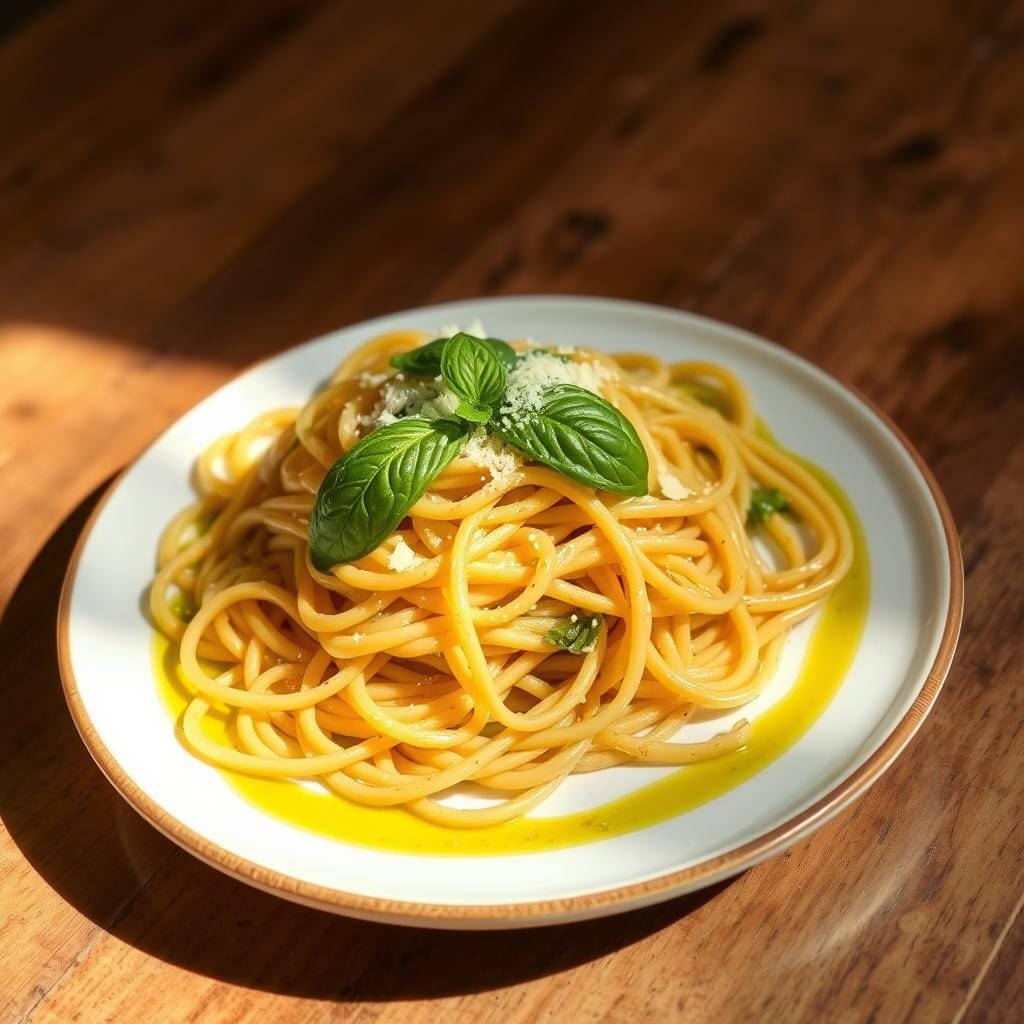
What is Tagliolini? The Pasta That’ll Steal Your Heart
Let’s start with the basics. If you’ve never tried tagliolini before, you might be thinking, “What’s the difference between tagliolini and spaghetti?” I get it! They’re both long, thin pastas, but there’s a key difference.
Tagliolini is a traditional Italian pasta from the regions of Piedmont and Liguria. It’s very similar to tagliatelle but thinner and, in my opinion, a little more delicate. The strands are usually made fresh, and when cooked right, they have the perfect texture—soft yet slightly firm with just enough chew. They’re like the cool cousin of spaghetti, just a little more elegant and refined.
Tagliolini is typically made with egg pasta dough, which gives it that rich, golden color. It’s perfect for soaking up lighter, cream-based sauces or a drizzle of olive oil with some garlic and herbs. It’s also a favorite choice when you’re pairing pasta with seafood (hello, tagliolini with clams and shrimp).
Essential Ingredients for Homemade
Making tagliolini at home is simpler than you think. Once you’ve got the right ingredients and a little bit of patience, you’ll never want to buy store-bought pasta again. Trust me, fresh tagliolini is a game-changer.
Here’s what you need:
- 2 cups of all-purpose flour (or 00 flour if you want the authentic Italian touch)
- 2 large eggs
- A pinch of salt
- A splash of olive oil (optional, but it helps with the texture)
That’s it! Fresh, quality ingredients make all the difference. The eggs are the star of the show here, so go for the best you can find. You don’t need anything fancy, but fresh, free-range eggs will make a noticeable difference in flavor and color.
If you’re feeling adventurous and want a twist, you can swap out part of the all-purpose flour for semolina flour for a more rustic, toothsome texture.
For a heartier meal, consider adding chicken or seafood. A dish like marry me chicken pasta is a great choice when you want to add a little extra protein to your meal. The pasta will soak up all the delicious flavors!
Tagliolini is also perfect for soups. You can add it to a comforting bowl of marry me chicken soup for a complete and satisfying meal.
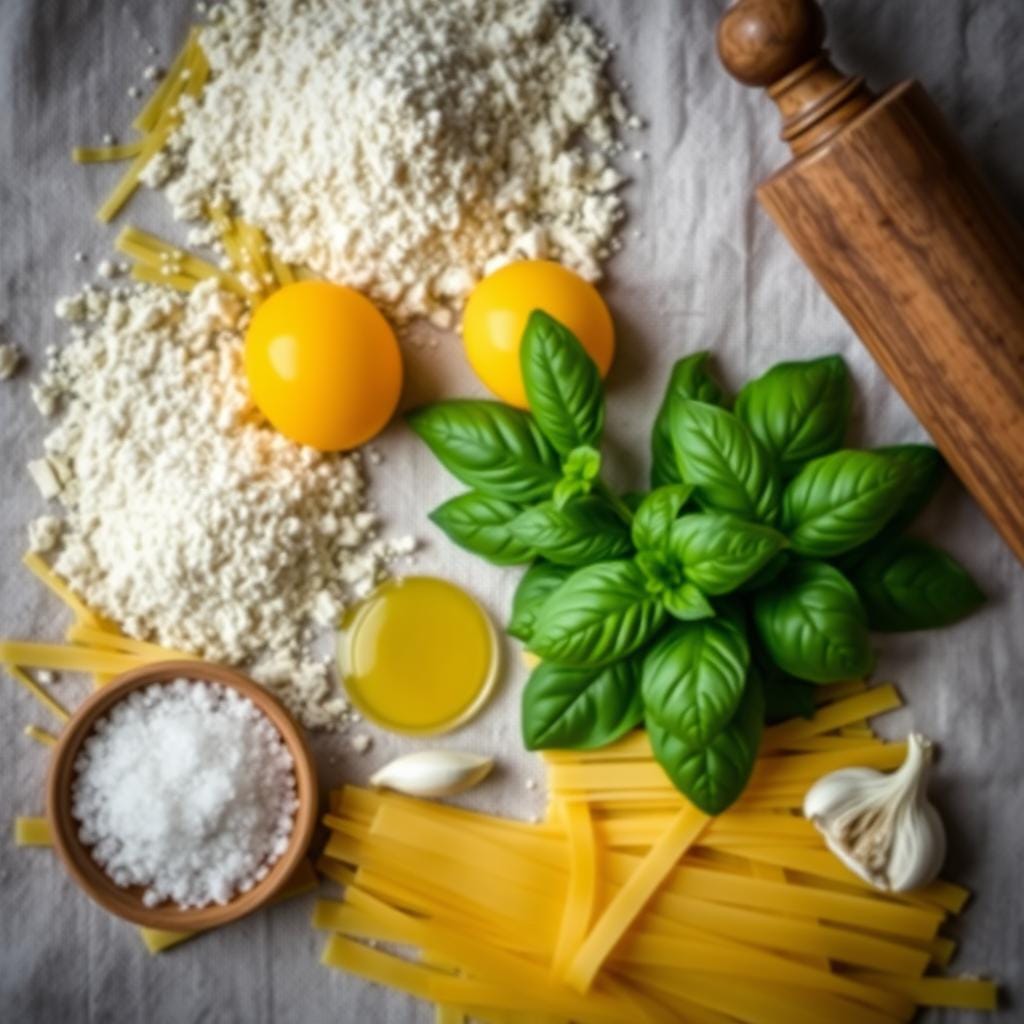
Mastering the Traditional Tagliolini Preparation Process
Making the perfect tagliolini pasta recipe at home needs skill and care. This classic Italian pasta needs a traditional method for its unique taste and texture. Let’s explore how to master the traditional recipe for pasta tagliolini.
The base of tagliolini is a dough of flour, eggs, and salt. Mix these ingredients until you get a smooth dough. Then, cover it and let it rest for at least 30 minutes. This step relaxes the dough and blends the flavors.
After resting, roll out the dough thinly and evenly. Use a pasta machine or a rolling pin to thin it down. Make sure not to overwork the dough to avoid a tough texture.
- Cut the dough into long, thin strips, about 1/4 inch wide, for the tagliolini noodles.
- Dust the noodles with flour to prevent sticking and separate them for even drying.
- Let the tagliolini air-dry for at least 30 minutes to get a slight crunch.
To cook, boil a large pot of salted water. Add the fresh tagliolini pasta and cook for 2-3 minutes until al dente. Drain the pasta, saving some cooking water for the sauce.
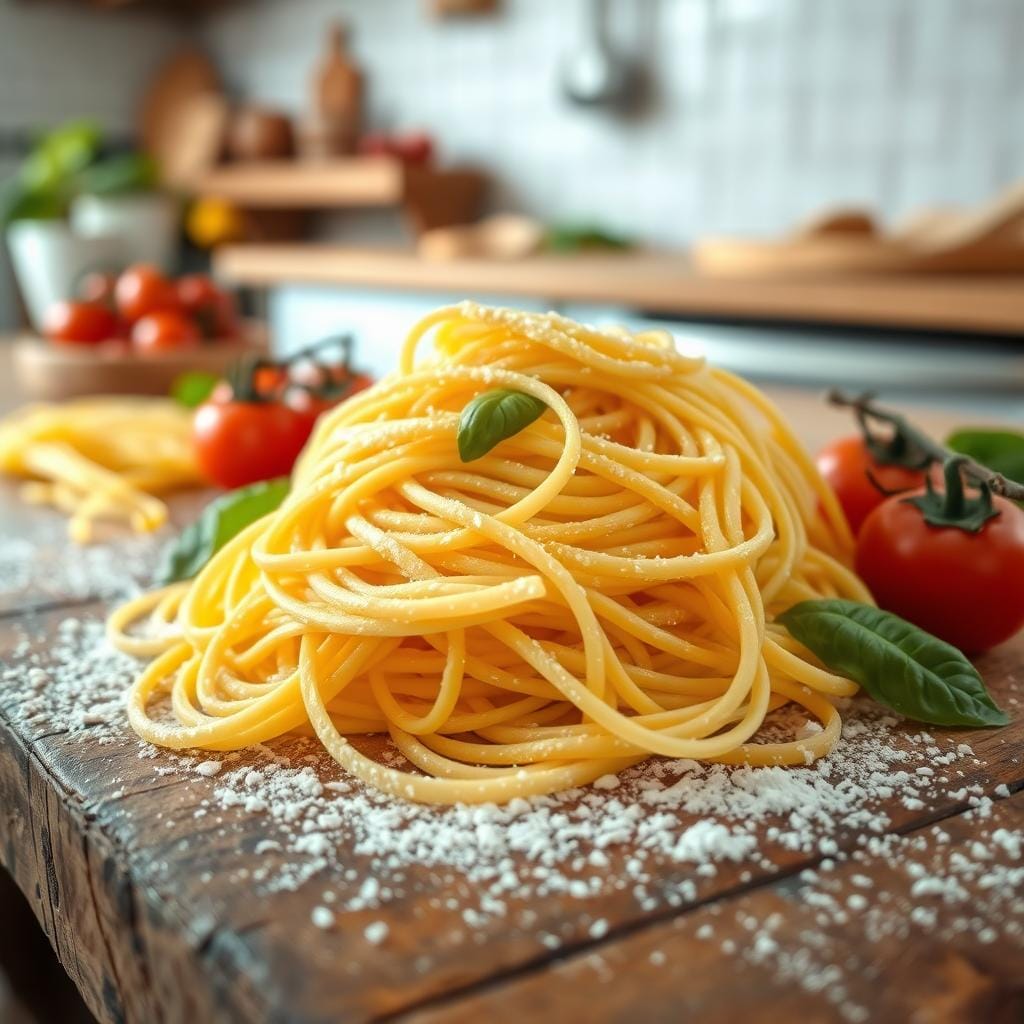
How to Make Tagliolini: Step-by-Step
Now, the fun part. Don’t worry—it sounds more complicated than it actually is. Making homemade pasta takes a little bit of time, but trust me, it’s totally worth it. Plus, there’s something incredibly satisfying about making pasta from scratch. You’ll feel like a true Italian nonna in no time.
Step 1: Making the Dough
Start by placing your flour in a mound on a clean surface or in a large bowl. Create a well in the center (it’ll look like a little flour volcano). Crack the eggs into the well and add a pinch of salt. If you’re feeling fancy, add a tiny splash of olive oil for a silkier dough.
Now, here comes the fun part—use a fork to gently beat the eggs in the well. Gradually start pulling the flour into the eggs with the fork. Keep stirring until it starts coming together as a dough. Once the dough begins to form, ditch the fork and start kneading with your hands.
Knead the dough for about 8–10 minutes until it’s smooth, elastic, and not sticky. You might need to add a little more flour if it feels too sticky, but try not to go overboard. You want a dough that’s firm but still pliable.
Step 2: Resting the Dough
Once your dough is ready, wrap it in plastic wrap and let it rest for at least 30 minutes. This step is key—let the dough relax before rolling it out. It’ll make rolling and cutting much easier. Trust me, it’s worth the wait!
Step 3: Rolling Out the Dough
After the dough has rested, it’s time to roll it out. If you have a pasta machine, you can use that to roll out the dough into thin sheets. Start with the widest setting, and as the dough thins out, gradually move to narrower settings.
If you’re rolling by hand (and hey, that’s totally fine!), you’ll need a rolling pin. Roll the dough out as thin as possible—think of how thin you want your tagliolini to be. Ideally, aim for about 1/16-inch thickness.
Step 4: Cutting the Tagliolini
Now for the fun part—cutting the tagliolini! Once the dough is rolled out, fold it up gently, and using a sharp knife, cut the dough into thin strips (about 1/8-inch wide). Unfold the strips and dust them lightly with flour so they don’t stick together. You’ll now have a bunch of beautiful, delicate strands of tagliolini.
Step 5: Cooking the Tagliolini
Bring a large pot of salted water to a boil. Once boiling, drop your fresh tagliolini into the water. It only takes about 2-3 minutes to cook. Fresh pasta cooks way faster than dried, so keep an eye on it! Taste a piece to make sure it’s tender but still has a little bite (al dente is the goal here).
Once cooked, drain the tagliolini, reserving a cup of pasta water to help with your sauce.
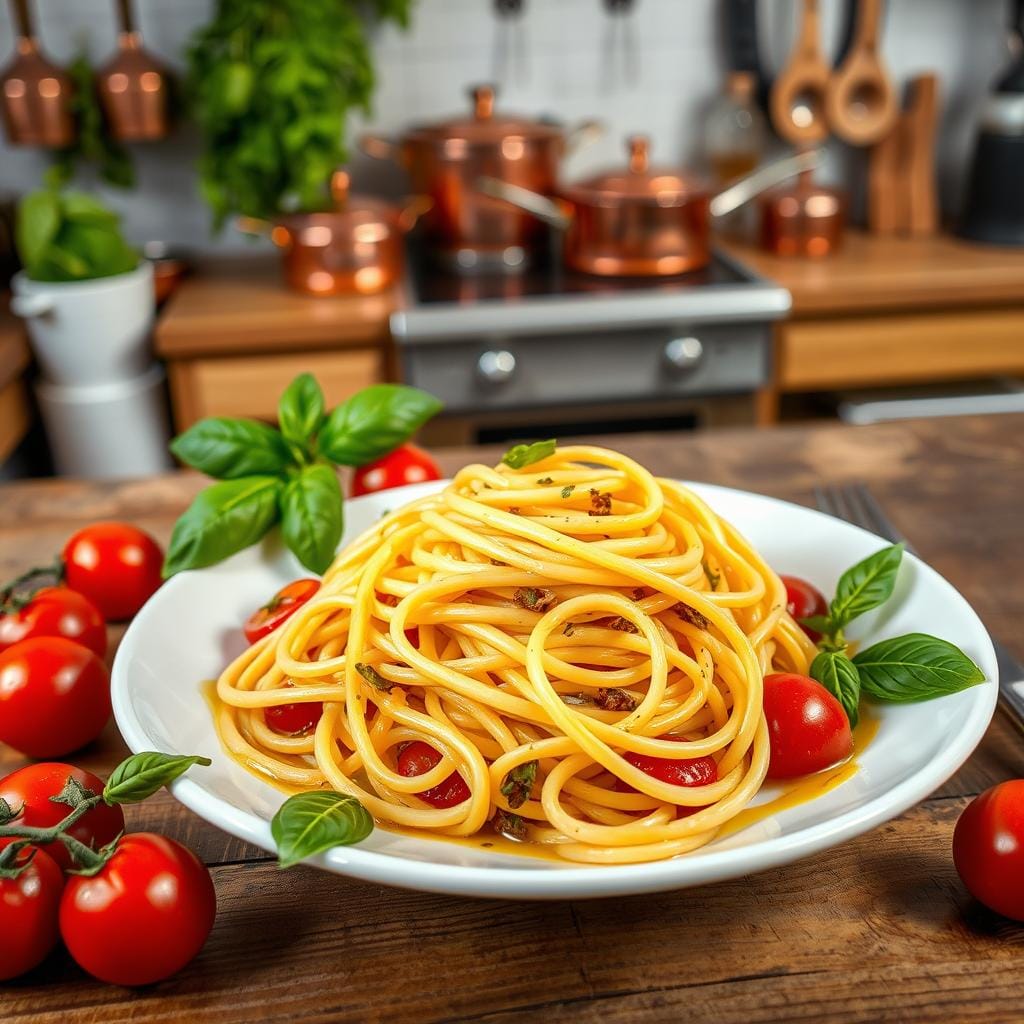
Best Sauces to Pair with Tagliolini
Okay, now that you’ve got your fresh tagliolini ready, it’s time to think about what to serve it with. Honestly, the best thing about tagliolini is how versatile it is. The delicate pasta pairs beautifully with a range of sauces.
1. Truffle Butter Sauce
If you’ve got some truffle oil lying around (or fresh truffles—lucky you), then a simple truffle butter sauce is a great choice. Just melt some butter, add a splash of truffle oil, and toss the tagliolini in this rich sauce. A sprinkle of Parmesan and a few fresh herbs, and you’re in pasta heaven.
2. Lemon and Garlic Olive Oil
For a lighter option, a zesty lemon and garlic olive oil sauce is perfect for letting the freshness of the tagliolini shine. Sauté garlic in olive oil, add a squeeze of lemon, and toss the pasta in it. It’s simple but oh-so-flavorful.
3. Pesto Sauce
Tagliolini and pesto are a match made in pasta heaven. Whether you’re using basil pesto or sun-dried tomato pesto, this sauce is packed with flavor. Toss your tagliolini with pesto and a bit of pasta water to help the sauce stick to the noodles.
4. Seafood Sauce
Tagliolini pairs beautifully with seafood. Try it with a mix of shrimp, clams, or mussels tossed in a white wine and garlic sauce. The delicate pasta is the perfect vehicle for soaking up that rich, garlicky sauce.
Why You Should Make Tagliolini at Home
Making tagliolini from scratch is one of those things that feels a little intimidating at first, but once you get the hang of it, it becomes second nature. Plus, homemade pasta just tastes better. It’s fresher, softer, and has a depth of flavor that store-bought pasta can’t match.
If you’re planning to host a dinner party, making homemade tagliolini will impress your guests (I mean, who doesn’t love fresh pasta?). And honestly, there’s something so rewarding about sitting down to a plate of pasta that you made yourself. It’s an experience as much as it is a meal.
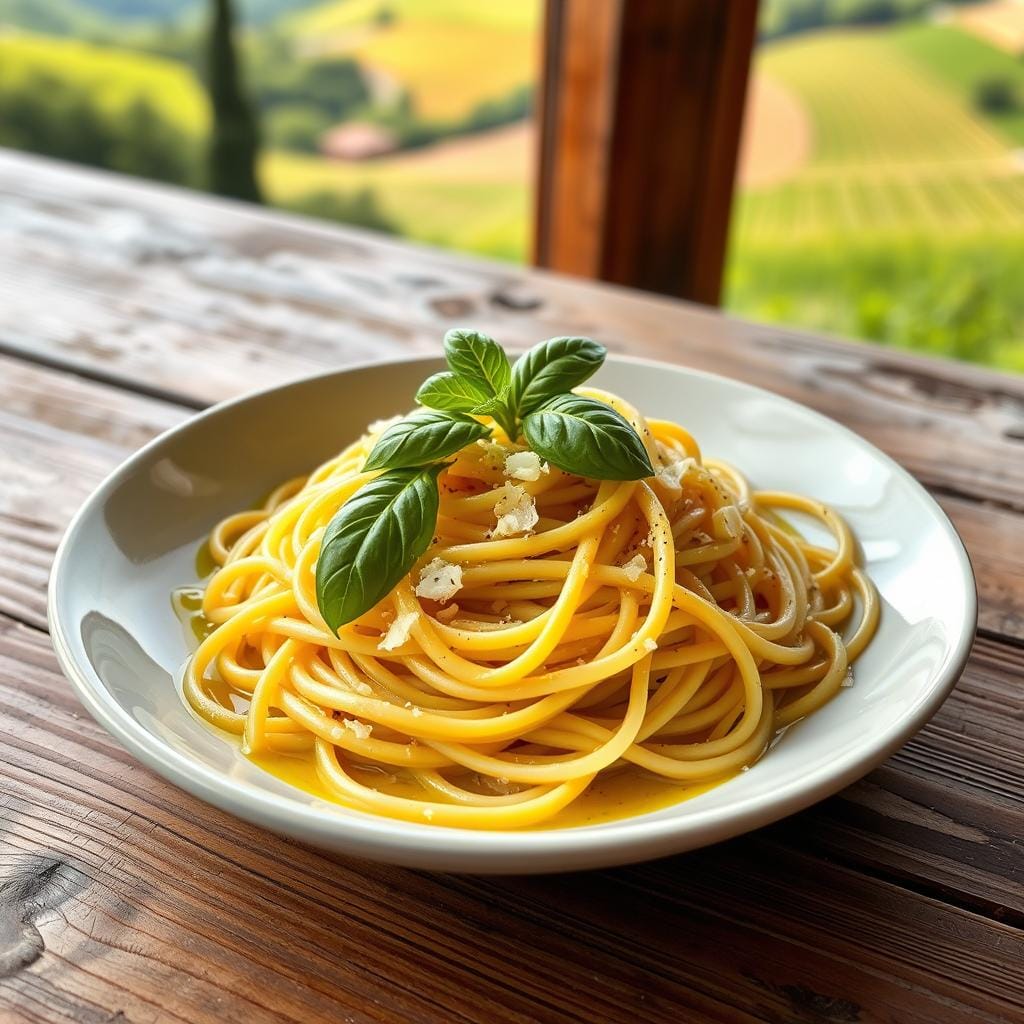
Final Thoughts
In the world of Italian pasta, tagliolini is an unsung hero—thin, delicate, and incredibly versatile. It’s the kind of dish that takes a little time and patience to make, but the payoff is totally worth it. Whether you’re pairing it with a rich truffle sauce, a light olive oil and garlic concoction, or a seafood medley, tagliolini will bring the flavors to life.
So next time you’re feeling a little adventurous in the kitchen, why not try making tagliolini from scratch? It’s easier than you think and way more satisfying than grabbing a box of pasta from the grocery store.
FAQs
What Is Tagliolini Used For?
Tagliolini is a versatile Italian pasta that’s perfect for pairing with a variety of sauces. Its thin, delicate strands make it ideal for lighter, more refined sauces, like a simple garlic and olive oil, or creamy, rich sauces such as truffle butter. Tagliolini is also great for seafood dishes, where the thin pasta can absorb the flavors of the sauce without overpowering the dish. Additionally, it’s often used in traditional Italian recipes from the Piedmont and Liguria regions, where it’s typically served with a variety of regional specialties.
How to Eat Tagliolini
Eating tagliolini is just like enjoying any other pasta. You can twirl it around your fork, grab a bite of the delicious sauce, and savor the flavor. Because of its delicate texture, tagliolini pairs well with lighter sauces that allow the pasta to shine. It’s also often served as a main dish or as a first course in an Italian meal, followed by a meat or vegetable-based second course. Whether it’s dressed with a creamy sauce, seafood, or a fresh pesto, tagliolini is best enjoyed with good company and a nice glass of wine.
What’s the Difference Between Spaghetti and Tagliolini?
The main difference between spaghetti and tagliolini is their thickness. Tagliolini is thinner than spaghetti and has a more delicate texture. Both are long pasta types, but tagliolini, made with egg pasta dough, is softer and often more tender than spaghetti. It’s perfect for lighter sauces, while spaghetti is more suited for hearty, tomato-based sauces.

